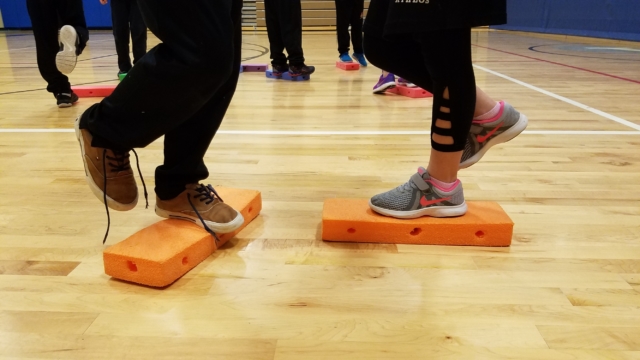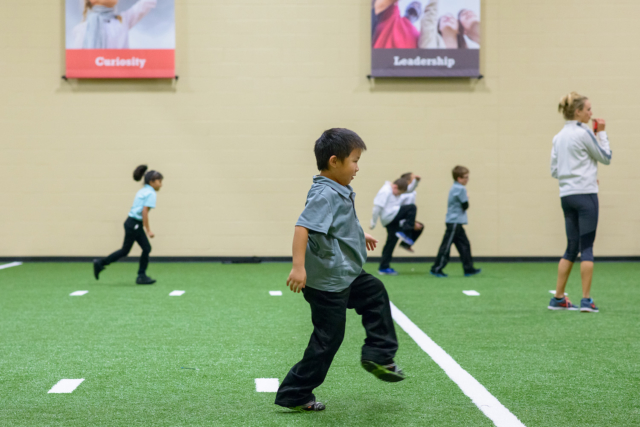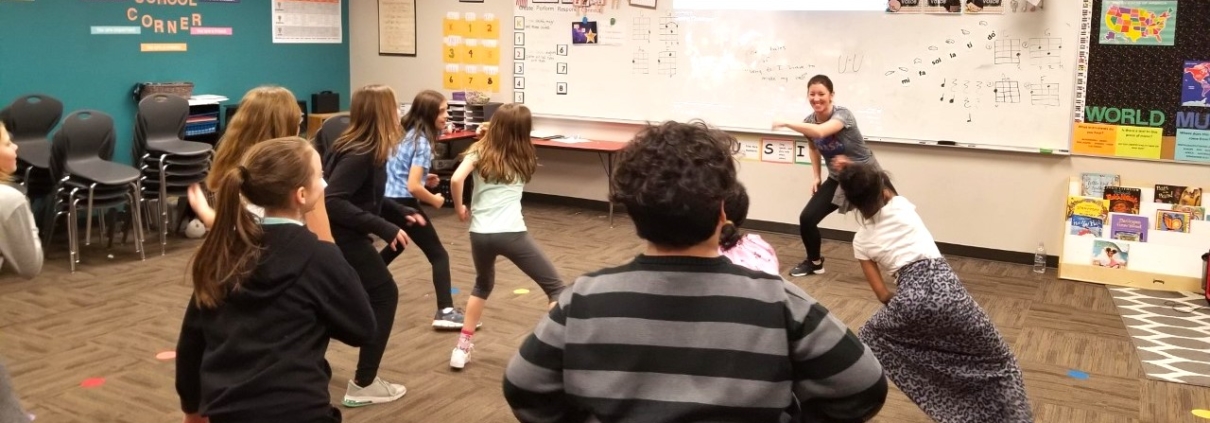Improving Student Behavior through Movement
By incorporating student movement in the classroom and on the turf, Athlos’ focus on physical activity and a healthy lifestyle shows to effect student behavior.
Movement breaks at Athlos schools are less so much “breaks” as they are opportunities for students to develop motor and social skills, improve memory recall, and increase productivity throughout the rest of the day.
Movement breaks affect classroom engagement and behavior.
Researchers have found that students who are more active tend to exhibit better focus, cognitive processing, and improved memory recall than children who spend the time sitting still during class.
At Athlos schools, teachers are encouraged to hold short movement breaks during class. Depending on the teacher, these can be standalone breaks that can aid student focus, or they can be related to the lesson of the day.
“I’ve noticed that the more movement we have in the classroom, the better behaved the students are,” said Katie Jacobson, an elementary teacher at Athlos Academy of St. Cloud. “It allows students a chance to get their bodies moving before I ask them to sit still. It allows them to really explore their surroundings in a safe and structured way which minimizes off task behaviors.”

Physical activity boosts student focus and brain activity.
While many schools are replacing physical education with recess, Athlos not only holds recess and free play, but takes it a step further with added instructor-led movement classes.
Dan Price, the lead athletic performance coach at Athlos Academy of Utah said, “The teachers that I’ve spoken with noticed a marked difference in the students on the day they don’t have athletic movement versus the days that they do.”
During recess, student don’t have to move around or interact with others, whereas in an instructor-led movement class, students are required to move and engage with one another. This encourages students to take part in social interactions, participate, meet new people, and try new things.
“Recess and breaks tend to encourage social interactions, we can still have that in athletic movement, but we are doing it with a purpose.” – Dan Price
 At Athlos, movement is the key to success.
At Athlos, movement is the key to success.
From athletic movement classes to movement breaks in the classrooms, Athlos finds ways to keep students active both mentally and physically. However, behavior can still be a challenge and lead teachers to become creative with their classrooms.
“My whole class last year is a perfect example of improvement,” said Jacobson. “The class was very out of control and had high energy and high behavior issues. When I introduced the five for five movement break (five movements in five minutes) it dramatically reduced the behaviors I was seeing.”
“The students were calmer and more focused and stayed in their seats longer.” – Katie Jacobson
The goal is to increase student health, morale, and productivity.
The Athlos model is made up of three pillars, Prepared Mind, Performance Character, and Healthy Body. Much of that model focuses on student character development and improving behavior through physical education and social-emotional learning.
 “Sometimes students, especially the younger ones, struggle with socializing and staying on task,” said Price. “We try to foster that social development by keeping social-emotional learning goals at the forefront. I think that students with behavioral challenges tend to love movement because it’s less structured in their minds.”
“Sometimes students, especially the younger ones, struggle with socializing and staying on task,” said Price. “We try to foster that social development by keeping social-emotional learning goals at the forefront. I think that students with behavioral challenges tend to love movement because it’s less structured in their minds.”
Research tells us that body movement is linked to increased classroom productivity and improved behavior. By incorporating movement throughout the school day, Athlos students not only confirm this research, but show promise for the future of education.





Leave a Reply
Want to join the discussion?Feel free to contribute!